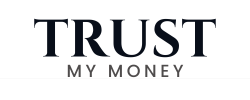Advertisement
The way we learn is changing. Over 100 million people worldwide have turned to online courses in the past year alone. This shows a big shift in how we get educated. But can online learning replace traditional college? The debate is ongoing, with both sides having strong points.
E-learning offers flexibility and accessibility, letting students learn from anywhere. Traditional colleges, on the other hand, provide a structured setting and face-to-face interaction. The choice between the two isn’t easy.
The rise of e-learning benefits is clear, but how do they stack up against traditional college? Let’s look at the good and bad of both to see their role in today’s education.
Introduction to Online Learning and College Education
The world of higher education is changing fast. Online learning, or distance learning, lets students learn from anywhere. They just need an internet connection.
This option is great for those who can’t go to traditional colleges. Traditional colleges offer a campus experience. Here, students and teachers meet face-to-face, which helps with learning.
Online learning and traditional colleges have different histories. Traditional colleges have been around for centuries. Online learning started in the late 20th century with the internet.
Now, online learning platforms have many courses and degree programs. This makes education more accessible. Here are some key points about both:
- Flexibility: Online learning is flexible and accessible.
- Interaction: Traditional colleges offer face-to-face interaction and a campus experience.
- Variety: Both have their own strengths and suit different learners.

In conclusion, knowing about online learning and traditional colleges is key. Both have their own benefits and meet different needs and preferences.
Advantages of Online Learning
Online learning offers a flexible, affordable, and diverse educational experience. It’s a popular choice for many due to its benefits.
Flexibility in Scheduling
One big advantage of online learning is its flexibility. Students can access materials and attend classes anytime, anywhere with internet. This is great for those with work or family duties.
- Attend classes from anywhere in the world
- Access course materials 24/7
- Balance education with other life commitments
Cost-Effectiveness
Online courses are cheaper than traditional programs. Students save on tuition, room, and board. Textbooks and materials also cost less online.
| Cost Component | Online Courses | Traditional On-Campus |
|---|---|---|
| Tuition Fees | Lower | Higher |
| Room and Board | Not Applicable | Higher |
| Textbooks and Materials | Lower | Higher |
Variety of Courses Available
Online learning platforms offer many courses in different fields. Students can find programs not available locally.
The variety of online courses helps students follow their interests and career goals. Whether it’s a certification or a degree, online learning offers many options.
Online learning makes education flexible, affordable, and diverse. As technology improves, online learning will offer even more opportunities for students worldwide.
Challenges of Online Learning
Online education is becoming more popular, but it faces many challenges. These obstacles can affect how well online learning works. It’s key to know these issues to make online education better.
Lack of Face-to-Face Interaction
One big problem with online learning is the lack of face-to-face interaction. This can make students feel alone and disconnected. To fix this, many online courses now have live sessions and virtual office hours.
Also, online talks can miss nonverbal cues, causing misunderstandings. But, using video conferencing tools and clear communication guidelines can help everyone understand each other better.
Self-Motivation and Discipline Required
Online learning needs a lot of self-motivation and discipline. Without a classroom schedule, students must manage their time well. To help, setting clear goals and having a dedicated study space can be helpful.
Using digital tools for organization and time management can also help. These tools keep students on track and at a steady pace.
In summary, online learning has its challenges, like missing face-to-face talks and needing self-motivation. But, there are ways and tools to tackle these issues. By tackling these problems, we can make online education more effective and engaging.
Advantages of Traditional College
Traditional college offers a chance for face-to-face interaction and networking. Students get to be part of a community. They can connect with peers and professors, building important relationships for their future careers.
Networking Opportunities
Traditional colleges are great for networking. Students meet peers with similar interests and career goals. This face-to-face interaction can lead to lasting professional connections.
As Forbes says, “Networking is about building relationships, not just about getting a job.” Colleges have many events, seminars, and workshops. Students can meet industry professionals and alumni, growing their professional network.
Career services and job fairs are available at traditional colleges. These events help students meet potential employers. For example, many colleges have annual career expos where companies recruit talent. This direct interaction is very valuable for students entering the job market.
| Networking Opportunities | Online Learning | Traditional College |
|---|---|---|
| Face-to-Face Interaction | Limited | Extensive |
| Career Events | Rare | Frequent |
| Alumni Network | Limited Access | Strong Access |
Comprehensive Campus Experience
Traditional colleges offer more than just academics. They have extracurricular activities, sports, and cultural events. These experiences help students develop teamwork, leadership, and time management skills.
“The whole education is to make the youth think for themselves and to give them the habit of expressing their thoughts with clarity and force.” – Charles Eliot
This quote from Charles Eliot, former Harvard University president, shows the broader impact of college education.
The campus experience also includes access to facilities like libraries, laboratories, and recreational centers. These facilities enhance the learning experience. For example, state-of-the-art labs give students hands-on experience in their field, preparing them for real-world challenges.
In conclusion, traditional colleges offer a well-rounded education. They provide academic rigor, networking opportunities, and a comprehensive campus experience. While online learning has its benefits, traditional college education is attractive to many students.
Challenges of Traditional College
Traditional colleges give a full education but come with big costs and strict schedules. These can be big hurdles for many students.
Higher Financial Burden
One big challenge is the high cost of traditional college. Tuition, room, and other expenses add up to a lot of debt. Online learning is cheaper, making it easier for students to afford.
Online degrees are often cheaper and don’t require moving or paying for room. This makes learning more open to more people.
Rigid Scheduling and Course Load
Traditional colleges have strict schedules that can be tough for students. The set class times and many classes can be too much. It’s hard to balance school with life.
Online learning lets you study when you want. You can watch lectures anytime. This makes it easier to manage your study time.
| Aspect | Traditional College | Online Learning |
|---|---|---|
| Financial Burden | High tuition fees and additional expenses | Lower tuition rates and reduced expenses |
| Scheduling Flexibility | Rigid class schedules | Flexible study schedules |
| Course Load Management | Fixed and often heavy course loads | Flexible pacing and manageable course loads |
In summary, traditional colleges have their good points but face big challenges like high costs and strict schedules. Online learning offers a flexible and affordable way to learn, appealing to many students.
Comparing Learning Styles: Online vs. Traditional
Education is changing, and it’s key to know how online and traditional settings support different learning styles. How well a program meets student needs greatly affects its success.
Visual vs. Auditory Learning
Students have unique learning preferences. Some are visual learners who do well with diagrams, videos, and infographics. Others are auditory learners who prefer lectures and discussions. Online courses can meet both needs with various multimedia tools.
Online platforms offer video lectures, interactive simulations, and downloadable materials for visual learners. Auditory learners can enjoy live webinars, discussion forums, and audio recordings.
| Learning Style | Online Education | Traditional Education |
|---|---|---|
| Visual Learners | Videos, infographics, interactive simulations | Diagrams on blackboards, visual presentations |
| Auditory Learners | Live webinars, discussion forums, audio recordings | Lectures, class discussions |
Hands-On Experience
Some students need hands-on experiences to learn best. Online programs have adapted by adding virtual labs, simulations, and project-based assignments. These offer practical experience.
Traditional education often excels in hands-on learning. It provides access to physical labs, workshops, and facilities for practical skills.
In conclusion, both online and traditional education have their benefits and drawbacks for different learning styles. Understanding these differences helps educators design better programs. This is true for both online courses and on-campus programs.
Future Job Market: Skills vs. Degrees
The job market is changing fast, with a big push towards skills over degrees. This change comes from new tech and what employers want.
Employer Preferences
Now, employers want people with skills that fit their jobs. A LinkedIn survey found 58% of executives think skills-based hiring is the way forward.
“The most in-demand skill is not coding or data analysis, but rather the ability to learn new skills quickly.” –
Companies are now training their workers and looking for new talent with the right skills.
Emerging Trends in Education
Schools are changing to meet the new job market. They offer online and flexible learning options. This includes micro-credentials and courses focused on specific skills.
- Micro-credentialing programs
- Skill-specific online courses
- Industry partnerships for curriculum development
The table below shows the main differences between old degree programs and new skill-based education.
| Aspect | Traditional Degree Programs | Skill-Based Education |
|---|---|---|
| Focus | Theoretical knowledge and broad-based education | Practical skills and industry-specific training |
| Delivery Method | Primarily on-campus | Online and flexible learning options |
| Outcome | Degree completion | Skill acquisition and micro-credentialing |
As the job market keeps changing, skills and degrees will both matter. But, the focus is moving towards skills that you can use right away.
The Role of Accreditation in Both Formats
Accreditation is key for students picking between online and traditional degrees. It makes sure schools meet quality standards.
Significance of Accreditation
Accreditation shows an institution’s programs are rigorous and relevant. For online degrees, it’s vital. It proves the internet-based education is top-notch and valued by employers.
The accreditation checks curriculum, teacher skills, and student help. This keeps education quality consistent across schools.
Differences in Accreditation Processes
Accreditation for online and traditional schools differs. Online programs face extra checks to ensure fairness and quality in online degree programs comparison.
| Accreditation Criteria | Traditional Institutions | Online Institutions |
|---|---|---|
| Curriculum | Typically follows a standard structure | May offer more flexible curriculum options |
| Faculty Qualifications | Often requires Ph.D. or terminal degree | May have additional requirements for online teaching |
| Student Support | Usually provides on-campus support | Must provide robust online support services |
The table shows some criteria are the same, but there are big differences in how they’re applied to online and traditional schools.
In summary, accreditation is crucial for quality in both online and traditional education. Knowing about accreditation helps students choose wisely.
Hybrid Learning: The Best of Both Worlds
Education is changing, and hybrid learning is at the forefront. It blends online learning with traditional classroom settings. This mix is becoming popular worldwide because it offers a more tailored and effective learning experience.
Definition of Hybrid Learning
Hybrid learning, or blended learning, combines online and traditional learning. It uses the best of both worlds to give students flexibility and accessibility. This approach makes learning more engaging and effective.
Key characteristics of hybrid learning include:
- Combining online digital media with traditional classroom methods
- Providing students with some control over the time, place, and pace of their learning
- Incorporating face-to-face interaction and online learning activities
Benefits of Combining Both Methods
Hybrid learning brings together the strengths of online and traditional learning. It meets different learning needs, boosts student engagement, and improves educational results.
| Benefits | Online Learning | Traditional Learning | Hybrid Learning |
|---|---|---|---|
| Flexibility | High | Low | High |
| Accessibility | High | Low | High |
| Personalization | Medium | Medium | High |
| Social Interaction | Low | High | Medium |
By using hybrid learning, schools can create a more inclusive and effective learning space. This approach meets the varied needs of students.
Case Studies: Success Stories in Online Learning
Online learning has shown its worth through many success stories worldwide. This shift to digital learning has opened doors for students everywhere.
Online learning is great because it’s flexible and accessible. It’s perfect for those who can’t go to traditional colleges. It helps people with busy lives or those far from schools.
Notable Online Learning Institutions
Some schools stand out in online learning. For example, Arizona State University Online is known for its digital education. It offers many online programs for undergrads and grads.
- University of Florida Online has online degree programs. It uses its academic strength online.
- Penn State World Campus lets students get Penn State degrees online. It keeps the university’s high standards.
These schools prove online learning can offer top-notch education. They meet the needs of students all over the world.
Industry Leaders with Online Degrees
Many leaders have grown their careers with online degrees. This shows online education is valued in the job world.
For instance, some big companies look for people with online degrees. IBM is one that supports online learning. It even offers its own training.
- People with online degrees are seen as very skilled. They show they can adapt and work hard on their own.
- Online learning lets working people improve their skills without quitting their jobs.
As the job market changes, online learning’s benefits are more and more seen. It’s a good choice for career growth.
Conclusion: Making the Right Choice for Your Future
Choosing between online education and traditional college is complex. It depends on your career goals and personal life.
We’ve looked at the advantages and disadvantages of both online learning and traditional college education. Online learning is great for those who need flexibility and want to save money. Traditional college, on the other hand, offers networking opportunities and a comprehensive campus experience that many students love.
When deciding between online courses vs on-campus programs, think about your learning style, self-motivation, and what kind of interaction you want. The table below highlights the main differences to help you decide.
| Features | Online Learning | Traditional College |
|---|---|---|
| Flexibility | High | Low |
| Cost | Generally Lower | Generally Higher |
| Interaction | Limited Face-to-Face | Face-to-Face |
In conclusion, whether you pick online education or traditional college, choose what fits your individual needs and goals. By considering these points, you can make a choice that supports your future.
Resources for Further Exploration
If you want to learn more about online learning compared to traditional college, there are many resources. These can help you understand the changing world of internet-based education.
Websites and Platforms for Online Learning
Many online platforms offer courses and degree programs. Sites like Coursera, edX, and Udemy are well-known for their quality. They provide educational content from top schools around the world. These platforms meet different learning needs, from casual to professional.
Articles and Studies on Education Trends
There are many studies and articles on education trends. Sources like the Harvard Business Review, The New York Times Education Section, and academic journals offer deep insights. They discuss how digital learning and internet education are changing society.



